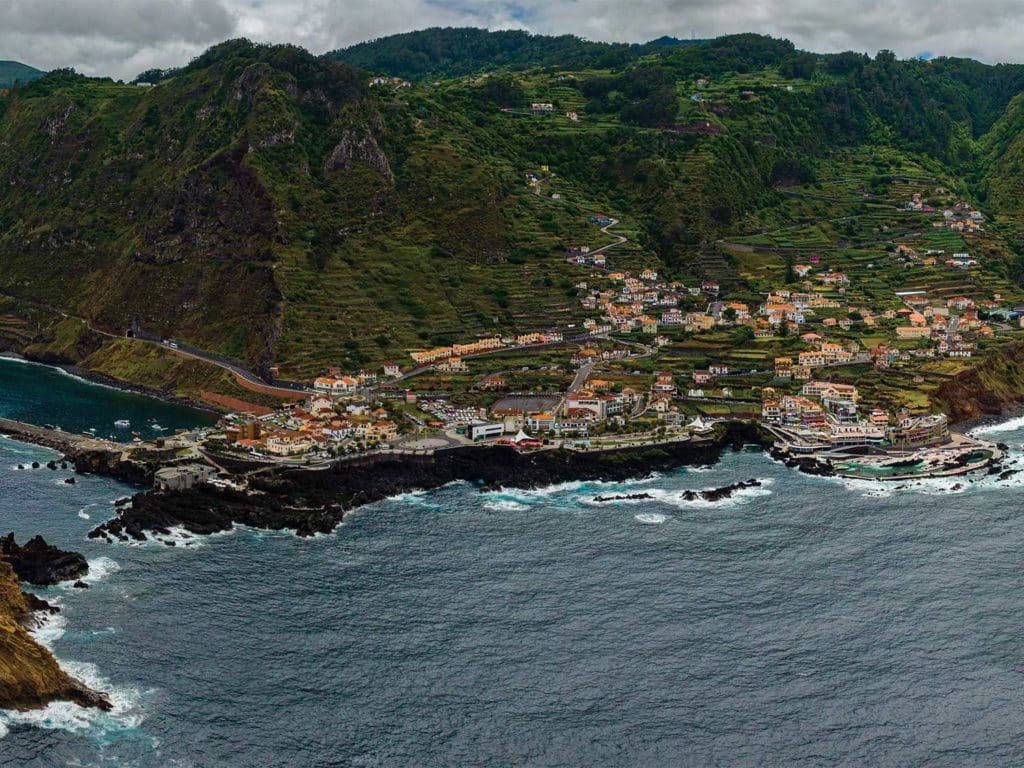
Special delivery: Sign up for the free Marlin email newsletter. Subscribe to Marlin magazine and get a year of highly collectible, keepsake editions – plus access to the digital edition and archives.
Madeira. I’d heard stories of this place for years. Big blue marlin. Calm seas. Perfect weather and friendly locals. Oh, and some really, really big blue marlin. It’s quality rather than quantity in this fishery. If you want a shot at a fish that makes heavy tackle seem, well, not so heavy after all, then it’s certainly worth a closer look.
Officially known as the Autonomous Region of Madeira, this island archipelago is situated in the North Atlantic about 250 miles north of the Canary Islands and 325 miles west of Morocco. The geography and scenery are simply incredible; the island juts abruptly skyward amid the cool, deep, impossibly blue waters that swirl around it. Nearly everyone who has ever wet a line here has come away with the same impression: It’s the most beautiful place I’ve ever fished.
Watch: Hop aboard for a spin on Mama C, a 60-foot Bayliss.
I was invited by my buddy Capt. Rob Ellyn, who runs the worldwide multiboat Lightspeed operation. He needed an angler to pre-fish with him the week leading up to the Blue Marlin World Cup on July 4 because his boss and friends wouldn’t arrive until a couple of days prior to the start. One thing I’d always heard about Madeira, though, is the fish tend to move through in waves—sometimes they are there, and sometimes they are not; and if they’re not, it can be a pretty slow pick. But as with any fishery that has its peaks and valleys, sometimes you hedge your bets. I told Ellyn that we were a solid maybe for the week.
By mid-June, Anthony Hsieh’s Bad Company team had set up shop in the small coastal community of Calheta with an impressive mothership and 57-foot Spencer gameboat setup. They released five blue marlin on their first day, including two that Capt. Steve Lassley called 800 pounds. From Hsieh’s Facebook post from that morning: “Lines in at 9:32 a.m., first hookup 10:27 a.m., 32 min later eased an easy 8. 11:31 a.m., 21 min later released a 500. I need to amp up my gym workouts.” That was good enough for me—I pulled the trigger on plane tickets and hotel reservations for myself and Marlin staff photographer Jon Whittle. We were set to fish in less than two weeks.
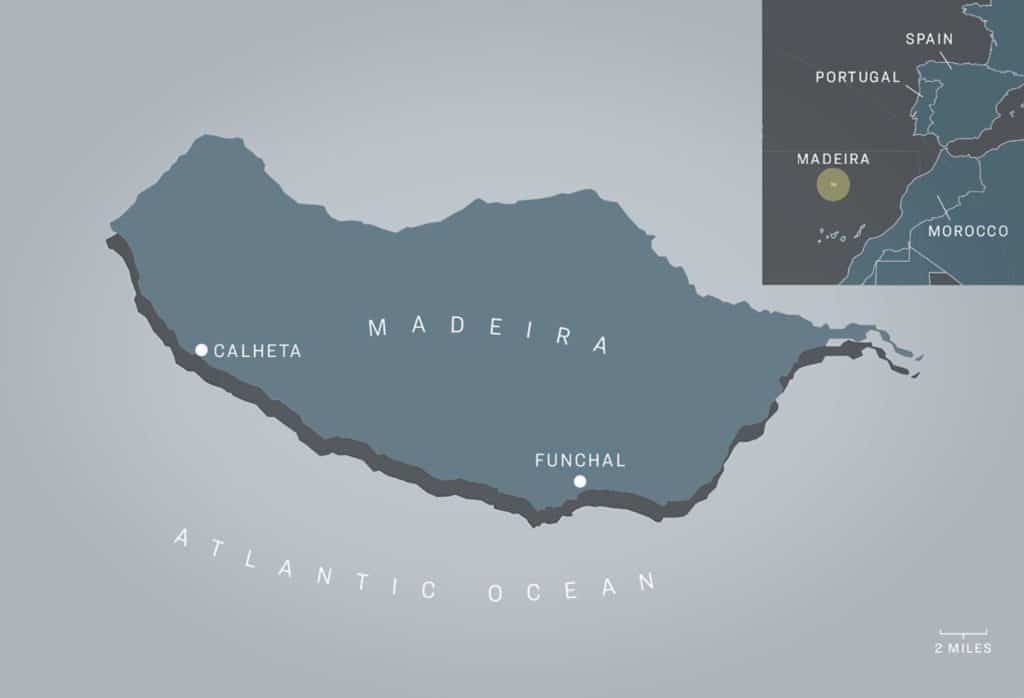
Building on a Historic Fishery
Far from a flash in the pan, the fishing has been good in Madeira for decades, if not centuries. There were probably jumbo blue marlin swimming laps around the island when it was first discovered by the Portuguese in 1419 during the Age of Discovery.
Conventional wisdom relates that because the island is situated near the upper reaches of a blue marlin’s preferred range of water temperatures, the fish there average quite a bit larger than those found in the warmer, lower latitudes. Combine this with an incredible abundance and variety of baitfish in the waters surrounding Madeira, and it’s clear that the big ones are not here to spawn but rather to strap on the feed bag.
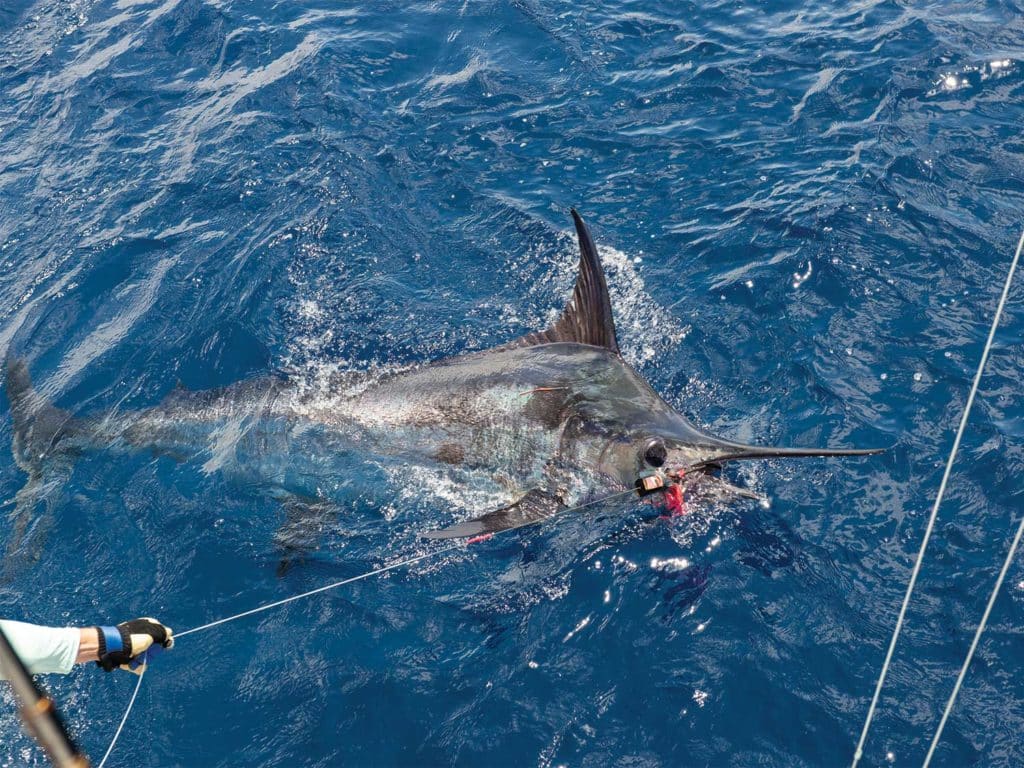
Australian Capt. Peter Bristow understands that phenomena of big blues better than most. As one of the world’s premier big-fish skippers, he spent 24 seasons on the Great Barrier Reef before shifting gears to the South Pacific. When that didn’t work out as he’d planned, Bristow spent some time looking around and traveled to Madeira for the first time in July 1996.
He says: “On the day I arrived, I walked down to the marina and knew everyone on every boat— the anglers, all the captains and most of the crew. They were the cream of the crop from all over the world, mostly from the United States. The elite of the heavy-tackle community, all here together in Madeira. The fishing was on fire. The bite had been going on for a few years and had worked itself into the best of the best on Earth. The next day, I got a ride out with my old friend Capt. Peter B. Wright. As far as you could see, there were 200-pound bigeye tuna jumping. The ocean was alive. Twenty minutes later, we caught a 700-pound blue marlin. My personal reaction was hard to describe—it was like dying and going to heaven. After all the glory days of Cairns and the drought in between, I had finally arrived. Right then, I made it my goal: This would be my retirement plan. And it worked. What made you come to Madeira? I have answered that question a hundred times over: It’s the fish and this beautiful island.”
When asked about the “here today, gone tomorrow” nature of the fishery, Bristow says: “All fisheries have their fluctuations. [There are] seasonal variations due to climate cycles. La Niña, El Niño and other complex issues in the North Atlantic. Offshore winds from North Africa, upwellings, ice melts, [fluctuations in the] jet stream and Gulf Stream, to name but a few. The North Atlantic is very complicated. No one seems to have a complete answer. But when the fishery comes up, it lasts for a few good years, and it’s well worth sticking around for. I’m not going anywhere!”
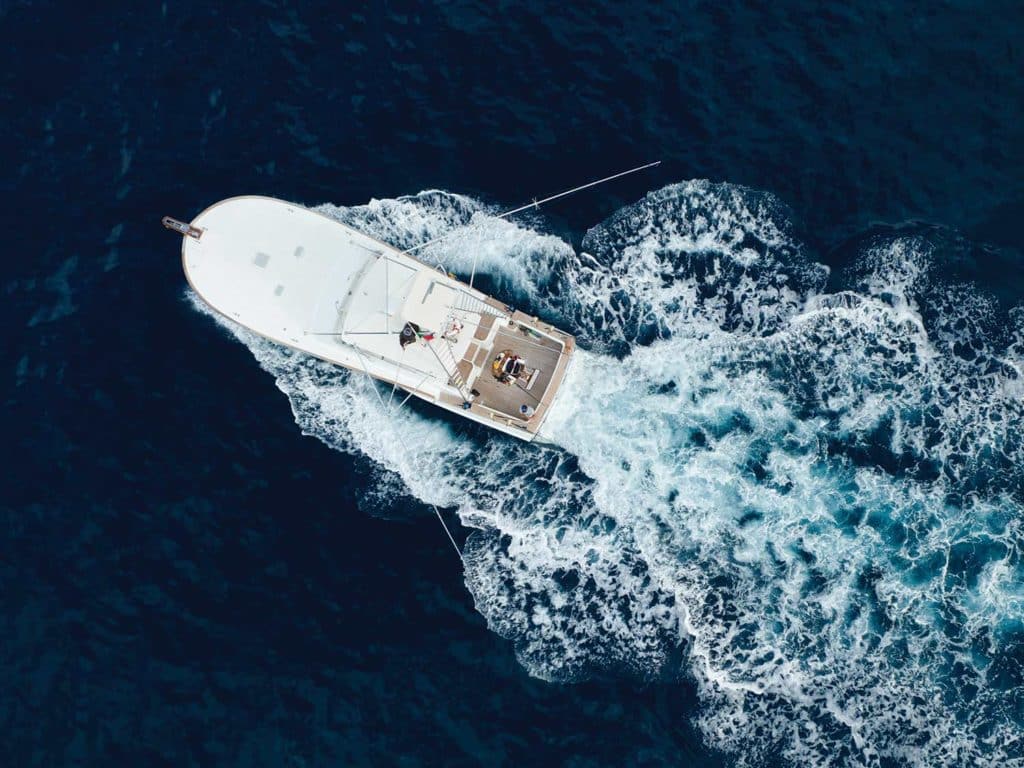
The Big Days
Intrigued about the tales of giant blues, I asked longtime Marlin contributor and Bristow’s fellow Aussie John Ashley for a few big-fish stories from his days fishing with Bristow in Madeira. “My first day out with Peter in the late 1990s, we released an 850-pound blue marlin,” Ashley says. “I’ll never forget his comment when I said, ‘That was a nice one!’: ‘Don’t worry, John, they get much bigger than that one here.’
“The next day I was sitting on the bridge watching the lures when a massive dorsal fin appeared behind the short flat line,” Ashley continues. “When the huge head came out of the water to eat the lure, I was gobsmacked and completely at a loss for words. We hooked this estimated 1,200-plus-pound blue, which took off and nearly emptied a Penn 130 in seconds. I can still see that big blue inhale a 16-inch lure like a jelly bean. Bristow did a great job maneuvering the boat quickly without running over the line, and the angler did a great job retrieving all the lost line. After well over an hour, the top shot was finally back on the reel. I was in the cockpit, ready with my camera for a close-up headshot of the fish, when suddenly the rod tip bounced a couple of times, and the hook just fell out.”
A few days later, the duo were fishing near the impressively steep Cabo Girão cliff faces when they noticed Tracy Melton’s Grander hooked up and heading inshore. Bristow decided to follow to see what this big blue marlin was doing way up in the shallows.
Ashley says: “Another Aussie mate of mine, Bo Jenyns, was on board. As we got close, Bo had the leader in hand, but unfortunately there were no jumps, and the big blue pulled away. He had to release the trace and told me later that they could see the big blue swimming along right near the bottom. After another half-hour, the blue headed back to deeper water, and finally Bo got her up for release. None of us could believe what had just happened and what this estimated 850-pound blue marlin was doing so close to the shoreline.”
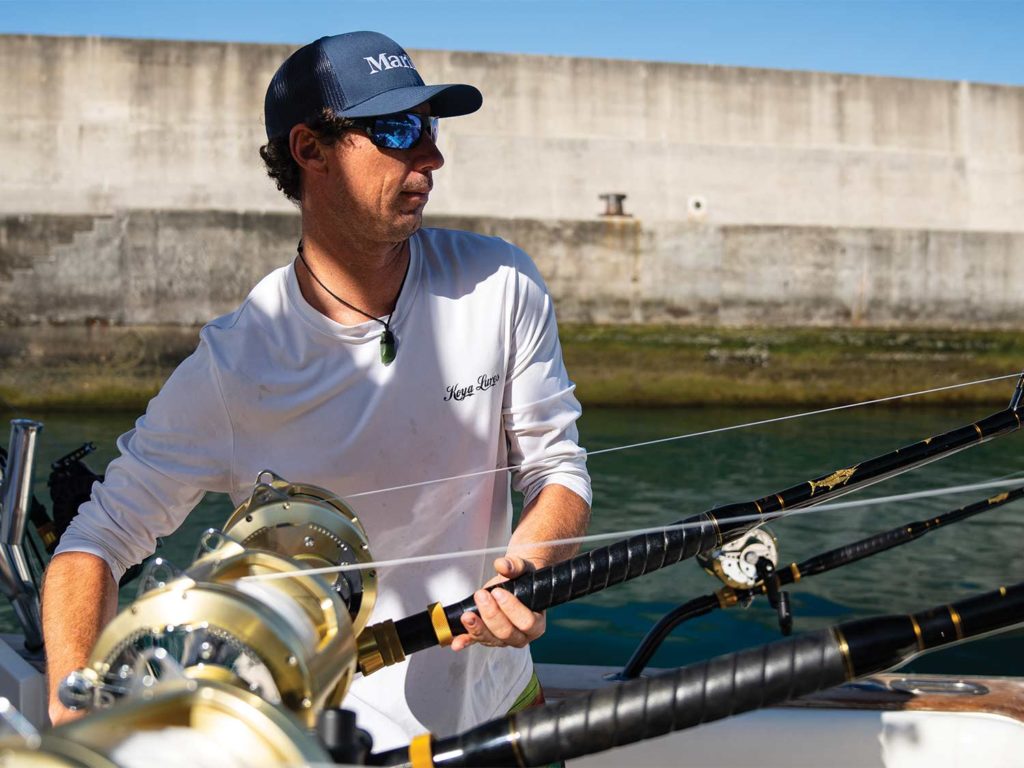
The Legacy Continues
Capt. Karl Anderson is another decades-long Marlin contributor with an interesting history in Madeira, having shipped a sportboat there back in 2006. “I missed the heyday years of the mid-90s with the extra-large quality fish because my son was just born,” he says. “I stayed home and listened from afar as the top crews were experiencing an incredible blue marlin fishery with unheard of numbers of 600-plus-pound fish. It wasn’t an easy place to get to, and the commitment from owners and crews was intense to make it happen.
“Then the bottom fell out, and the fish just didn’t show up for a few seasons,” he continues. “We now know that Madeira has history of boom-and-bust fishing. After all, it’s a tiny speck in the North Atlantic, and conditions need to align for it to get right and stay right. Things stayed quiet for a while, then in the summer of 2005, there was a decent flurry of fish. So, in January 2006, we set out to ship the 58-foot Merritt Brier Patch. Owner Mark O’Brien and I committed to going, along with Stewart Campbell and Capt. Bark Garnsey on Chunda, their recently acquired 42-foot Gamefisherman. My deckhand Ben Brownlee and I went through every inch of the boat and worked feverishly throughout the winter and spring as we fished to be prepared to ship it to Europe. In mid-April after a trip to Georgetown, Exuma, we loaded in Fort Lauderdale, Florida, after experiencing several delays and problems with a shipping company that’s no longer in business.”
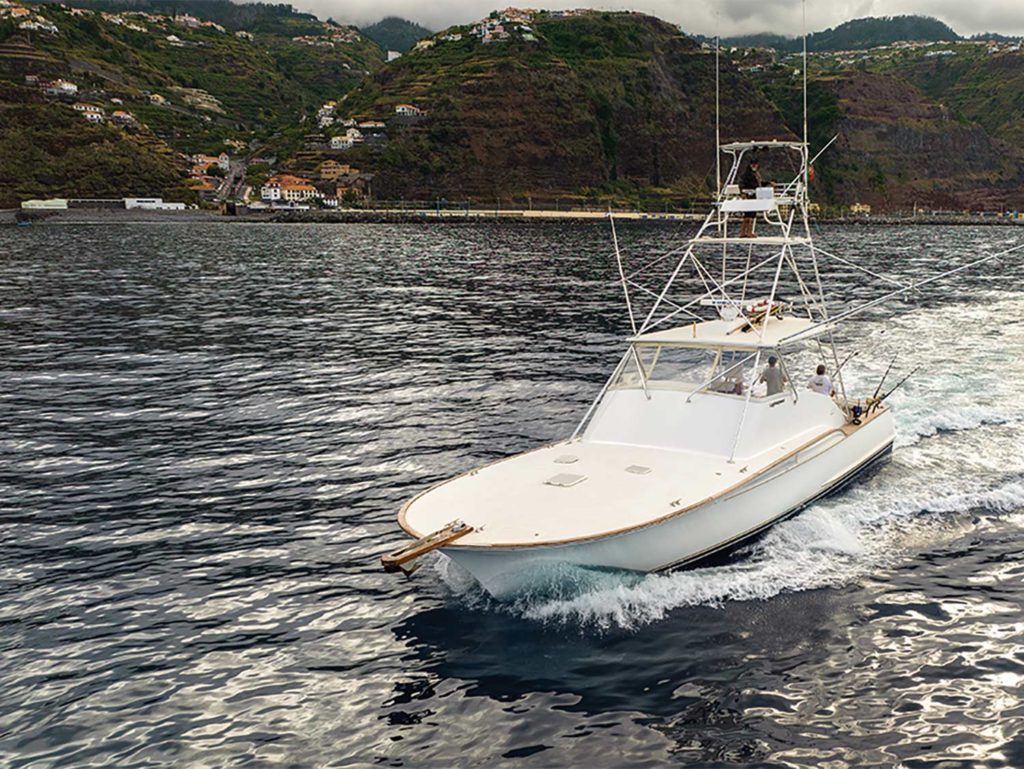
Originally booked for Genoa, Italy, Anderson negotiated a shaky agreement with the shipping agent to drop off Brier Patch in Gibraltar, which would cut off some 900 miles of steaming across the Mediterranean. Just as they were preparing to leave, they joined up with Garnsey and Chunda in the Algarve off Portugal for the 600-mile transit to Madeira. “We arrived in Calheta around 2 p.m. on May 30, 2006, where Mark was waiting for us on the dock. The next morning, we set out fishing, and in the first hour, we released a nice fish of 850 to 900 pounds—exactly the reason we went. The rest of our season went just the same: good fishing and some quality fish. It took me another 10 years to get back, but in 2016, I put a group together and shipped Carlos Duncan’s 63-foot Merritt, Saranita, over to Gran Canaria, ran the boat to La Gomera, then repositioned to Madeira at the end of May that year. We had decent fishing the rest of the season—no fish over the mark but several over 800.”
Upon arriving in Madeira, the first thing that strikes you, especially coming from a steamy Florida summer, is the weather. The humidity is low, and the temperatures are cool and crisp, even during the middle of the day. In fact, it can be chilly on the water—an unusual phenomenon for blue marlin fishing in most places, for sure. As we met Ellyn and his deckhand, Kiwi Capt. Jesse Dixon, the afternoon of our arrival in Calheta, it seemed fishing had slowed a bit. Ellyn explained that the local custom was to leave the marina at 10 a.m., leaving plenty of time for coffee and a leisurely breakfast; we would fish until 6 p.m. each afternoon. Most boats begin trolling as soon as they depart the marina—in conditions very similar to Kona. The depths plummet from a dozen fathoms not much more than a stone’s throw from shore to 1,500 fathoms within just a few miles from the dock. The island offers a protected lee, and while it’s not always calm, it’s more the norm than the rare exception to be trolling in virtually flat conditions. Dixon set a Kona-like spread consisting of Hawaiian favorites fished from 130s and tag lines from the cockpit of the 48-foot Davis express. No sense bringing a switchblade to a shootout here.
Read Next: Learn more about wake-adapted running gear and how it’s making today’s boats smoother and faster.
The Ups and Downs
We settled into an easy routine of fishing each day, a few beers afterward with our fellow anglers and crews at the marina bars lining the waterfront, and some terrific European-style dinners after sunset. Unfortunately, the fishing had cooled off with the temperatures, with most of the fleet blanking during the days leading up to the World Cup. However, once the one-day worldwide event kicked off on July 4, Madeira did produce the third-largest blue marlin at 624 pounds. Six World Cup winners have been weighed here, including three in a row from 1995 to 1997, with the most recent win in 2019. Madeira is also home to a double handful of IGFA line-class world records, with the current men’s 20- and 30-pound-test marks as well as the women’s 8-, 12-, 20-, 30-, and 80-pound-class fish all caught here.
Bristow best summarizes his experiences by saying: “Madeira can have a profound effect on you. The living is easy and the living is good. It is very satisfying to have been part of this.” I can only agree with his sentiments and hope to return to this truly amazing destination soon for a shot at my fish of a lifetime.
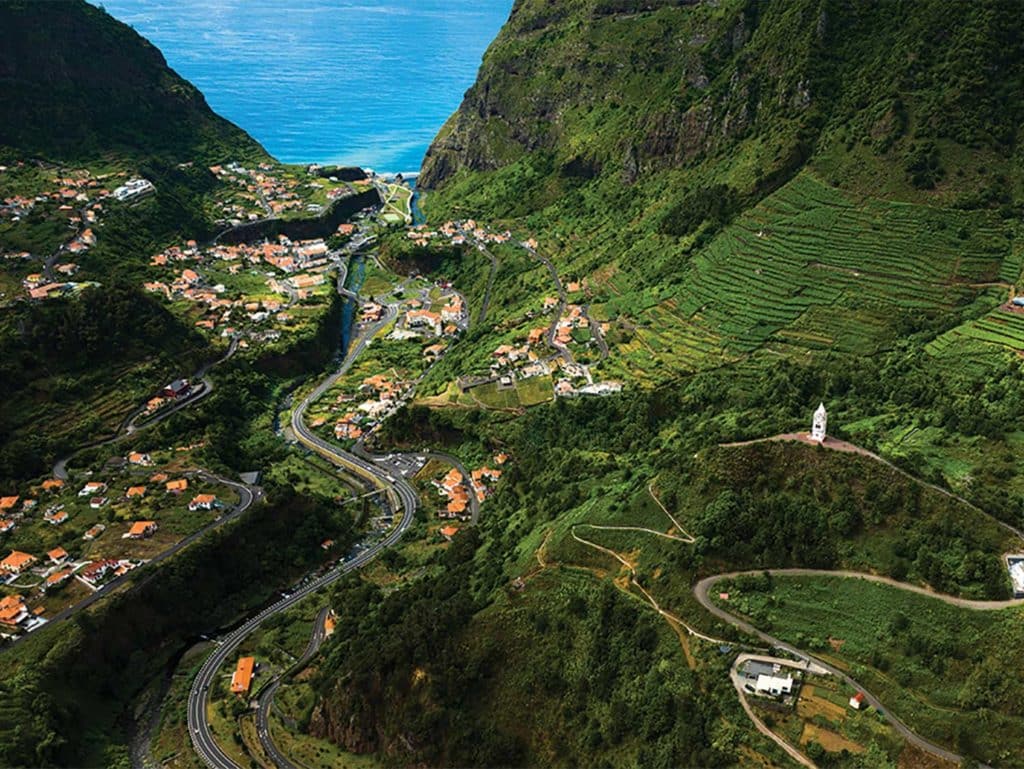
Get to Know Madeira
Visitors will fly into Cristiano Ronaldo International Airport located just outside the capital of Funchal, a city of just over 100,000 people, situated on the island’s southeastern coast. Most of the fishing activity centers on Calheta, about 45 minutes by taxi from the airport. The charming town has about 12,000 year-round residents; agriculture and commercial fishing are the primary sources of income, with the production and cultivation of banana, wine, flowers, and sugar cane as the main exports. Crime is virtually nonexistent. Be sure to exchange dollars for euros for the taxis and any other purchases prior to your arrival in Funchal; don’t forget a type-C power adapter for European-style outlets as well.
The most convenient hotel is the Savoy Saccharum Resort and Spa, which is a comfortable 10-minute walk from the marina. Along the waterfront there are numerous shops, restaurants and bars, including fishermen-favorite Aki Kahaleta, which is located right at the entrance to the marina docks.
The following are just a few of the many charter operations in Madeira:
- Capt. Peter Bristow, Katherine B, fishmadeira.com
- Capt. Alex Fanjul, Luna, Facebook: Madeira Sportfishing
- Capt. Frothy de Silva, Pesca Grossa, captainfrothy.com/pesca-grossa-madeira
- Capt. Anders Ekstrand, Gavito, gavitofishing.com
- Capt. Nuno Goncaves, Blue Makaira, atlanticbluemarlin.com







